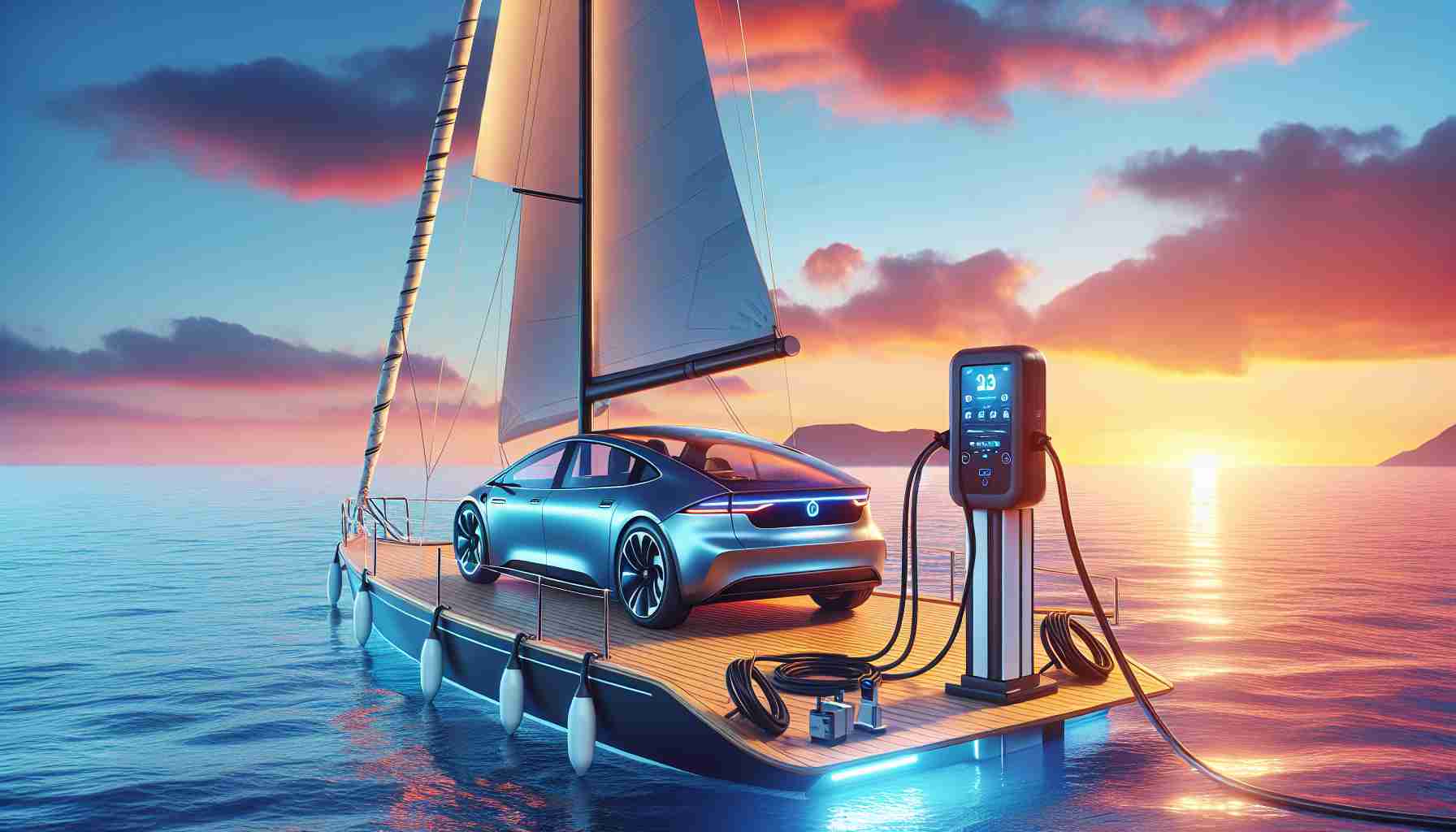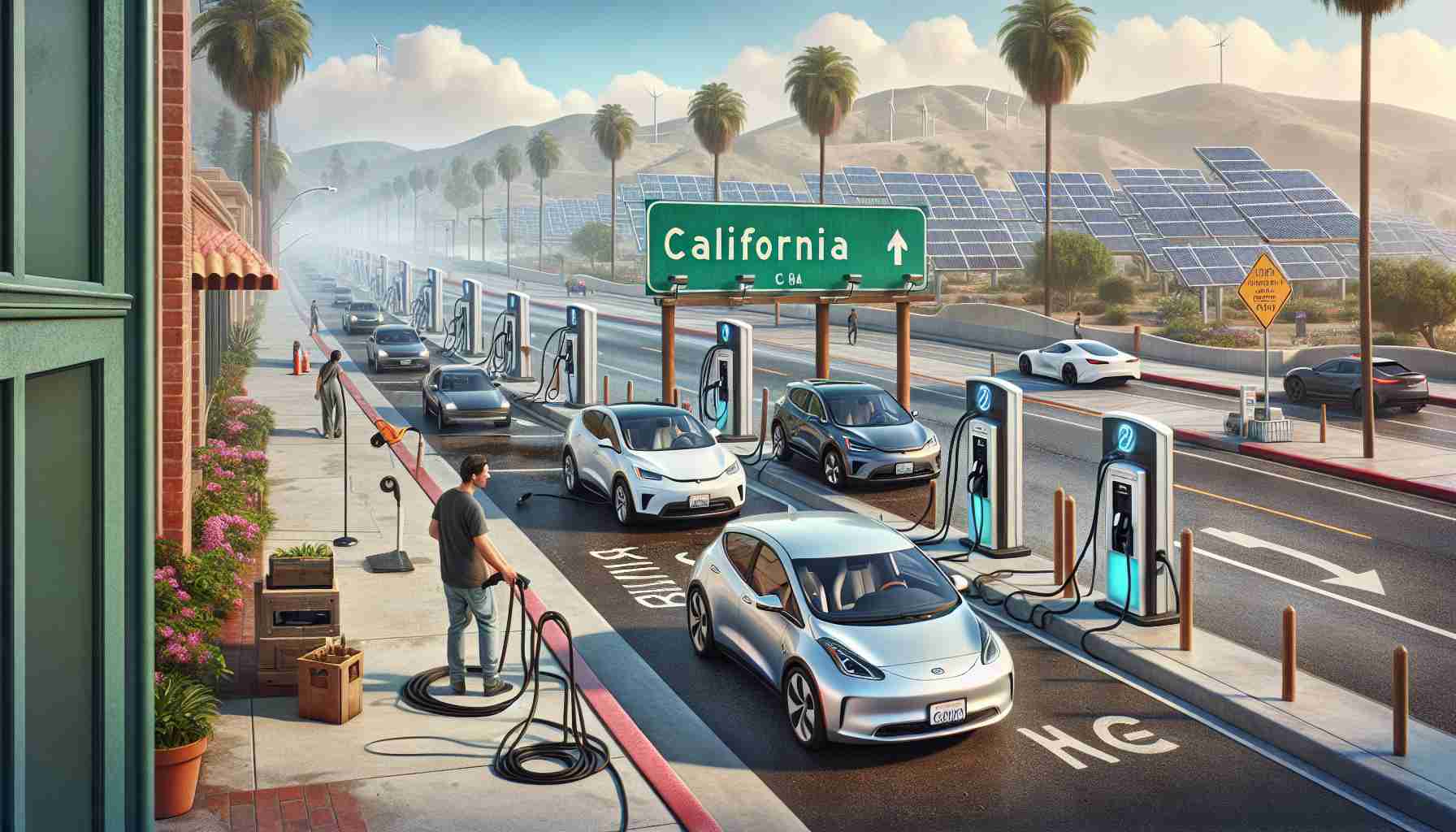- Marine Charging Point (MCP) focuses on providing EV charging solutions for ferries and marine vessels.
- Their installations include powerful charging capabilities, with ferries offering up to 160 kW via eight charging points.
- The quick ferry crossings can offer EV travelers significant range, up to 155 miles (250 km).
- Safety measures are being enhanced in light of past incidents to ensure secure charging procedures at sea.
- Ferry services in various regions, including Australia, are integrating EV charging into their operations for longer journeys.
- As EV technology progresses, charging while traveling by ferry is becoming essential for eco-friendly travel.
Imagine cruising across the water, your electric vehicle (EV) quietly charging as you enjoy the view. Sound like a dream? It’s becoming a reality thanks to innovative companies like Marine Charging Point (MCP), which specializes in EV charging solutions specifically for ferries and marine vessels.
Since its inception in 2017, MCP has transformed ferry travel with cutting-edge installations, such as those on the Øresundslinjen ferries, M/S Tycho Brahe and M/S Aurora, operating between Denmark and Sweden. These ships boast the most powerful EV chargers ever fitted to a marine vessel, featuring eight high-speed charging points capable of delivering up to 160 kW. This allows travelers to gain an impressive 155 miles (250 km) of range during the quick 20-minute crossing, providing a perfect opportunity to recharge and relax.
Safety is paramount in the maritime EV charging landscape. While fears from past incidents like the 2010 Pearl of Scandinavia fire have led to temporary bans in some regions, the industry is advancing standards and protocols to ensure safe charging at sea. Meanwhile, ferry operators in Australia are also embracing the trend, with new vessels set to include charging points for the long 10-hour journeys.
The key takeaway? As EV technology evolves, the convenience of charging while at sea is not just a luxury but a practical necessity for travelers. So, whether you’re a daily ferry commuter or planning your next adventure, expect to see more chargers on the water—turning your maritime travels into an eco-friendly experience!
Ride the Wave of Innovation: EV Charging is Making Waves on Ferries!
The Future of EV Charging at Sea
As electric vehicles (EVs) become an integral part of our daily lives, the marine industry is not left behind. Companies like Marine Charging Point (MCP) are making remarkable strides in integrating advanced EV charging systems aboard ferries and marine vessels. This emerging technology is set to transform the experience of ferry travel, providing eco-conscious travelers with the ability to recharge their vehicles while they cruise across the water.
Key Features of Marine EV Charging Systems
1. High-Power Charging Stations: MCP has developed the most powerful charging systems specifically designed for marine environments. The installation on Øresundslinjen ferries features eight high-speed charging points, delivering up to 160 kW each.
2. Rapid Recharge: Passengers can recharge their EVs significantly during short crossings—achieving up to 155 miles (250 km) of range in just a 20-minute trip.
3. Safety Standards: In response to past fire incidents in vessels, the industry is vigorously improving safety protocols to manage and monitor charging systems onboard, ensuring a secure experience for users.
Market Trends and Innovations
– Increased Adoption: There’s a growing trend among ferry operators across the globe to adopt EV charging capabilities, particularly in regions with extensive maritime travel such as Australia, where operators are also planning charging points on long-haul ferries.
– Sustainability Focus: The push for eco-friendly travel solutions aligns with global sustainability efforts, reducing carbon footprints associated with traditional fuel sources.
Evolving Regulations
Ferry operators and marine charging solution providers are collaborating to establish strict regulations and standards. These measures are crucial for fostering safe charging environments, particularly in light of historical concerns about onboard battery fires.
Pros and Cons of EV Charging at Sea
Pros:
– Convenience: Passengers can utilize travel time to recharge, facilitating smoother transitions between long road trips and ferry rides.
– Environmental Benefits: Supports greener transport options and reduces reliance on fossil fuels.
Cons:
– Infrastructure Investment: Initial setup and investment costs for high-speed chargers can be substantial.
– Public Perception: Concerns over safety and reliability must be addressed to gain passenger trust.
Answers to Important Questions
1. How effective is EV charging on ferries compared to traditional gas stations?
EV charging on ferries allows users to recharge quickly during short trips, which can be more convenient than finding a gas station. The ability to recharge while traveling means less downtime, especially on long journeys.
2. What are the safety measures in place for marine EV charging?
The industry adheres to stringent safety standards designed to mitigate risks associated with battery fires and electrical hazards. This includes the use of fire-resistant materials and advanced monitoring systems to ensure safe operation.
3. How does the future look for EV charging in the maritime sector?
With increasing regulations favoring green technology and a rising number of electric vessels, the future appears bright. More operators are likely to invest in charging facilities, leading to a wider network of EV accessibility on the water.
Conclusion
The integration of EV charging technologies aboard ferries not only enhances customer convenience but also aligns with broader sustainability goals. As innovations continue to develop, passengers can expect more seamless and eco-friendly travel experiences across water.
For more information on Marine Charging Point and their innovative solutions, visit Marine Charging Point.













